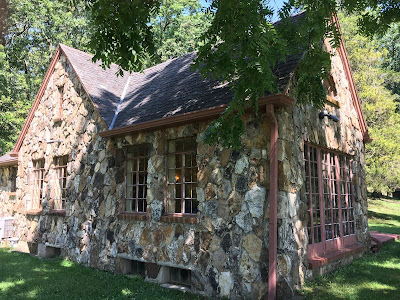The Nickel Boys is Colson Whitehead's first book since his Pulitzer Prize winning The Underground Railroad, a book that I really enjoyed. This one is about a black boy who is sentenced to a brutal juvenile reformatory in the Jim Crow South of the early sixties. Elwood is a believer in the philosophy of Dr. Martin Luther King, but his best friend in the reformatory is the complete opposite. What the two boys endure in this madhouse environment will determine what kind of men they become.
Dragonfly is one of the longer of the six books I picked up this morning, 559 pages. This one begins in 1942 when a group of American men and women are recruited by the OSS for a secret mission inside German-occupied Paris. Their group is given the code name Dragonfly, and they have to find a way to avoid detection long enough to complete the mission they've been assigned. Things change dramatically for the team after one of them is captured and executed by firing squad.
And that seems to be a popular theme this summer because Pam Jenoff's latest, The Lost Girls of Paris goes there, too. This one begins in 1946 when Grace Healey finds an abandoned suitcase in Grand Central Station that's filled with photographs of women After Grace figures out that twelve of the women in the pictures were sent into Occupied Europe during the war to aid the resistance, she is determined to learn everything that she can about them, their missions - and their ultimate fate.
This is one I've been particularly looking forward to because of my fascination with everything Harper Lee. Reverend Willie Maxwell's murder trial was so unusual that Harper Lee traveled from her home in New York City to Alabama to sit in the audience. She was apparently hoping to find the makings of a book there similar to her friend Truman Capote's In Cold Blood, but even though she spent years working on The Reverend, it was never published. I hope the book offers some insight into Lee's struggle to write after the huge success of To Kill a Mockingbird.
The Library of Lost and Found adds to my list of books set in libraries or bookstores. This one is the story of an introverted librarian who finds a mysterious book on her doorstep one day. When she opens it, she is startled to find a dedication written to her by her grandmother - a woman who mysteriously disappeared several years earlier. Now, having reason to believe that her grandmother may still be alive, Martha sets out to find out what really happened back then and why it happened.
I really love time-travel books and have read lots of them, but All Our Wrong Todays has a twist I've never before encountered. It seems that Tom Barren has somehow become trapped in our version of 2016. And since he he belongs in 2016, that would be no big deal if Tom had not somehow strayed into an alternative universe (ours) that is so much more technologically primitive than his version that he just can't stand it. Our 2016 is almost like a "dystopian wasteland" to Tom - until he starts to prefer its version of his family, friends, and career.
There you have it. I want to read all six books, but I know there's no way I'm going to read five of them in the next two weeks. All Our Wrong Todays will be with me for six weeks, so it goes to the bottom of the stack. But how do I prioritize the other five? Do I start with the longer books - or will that limit me to having to send three of them back unread. Or do I read the shorter books and risk not having time to read the two longer ones? And to top it off, I want to finish up Fredrik Backman's Us Against You before I start another book at all.
What's a reader to do? #notabadproblemtohave






































